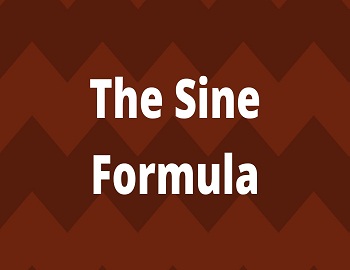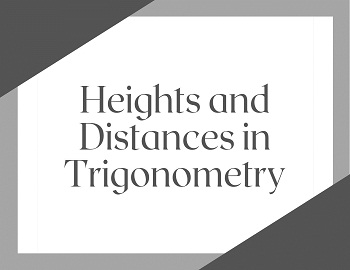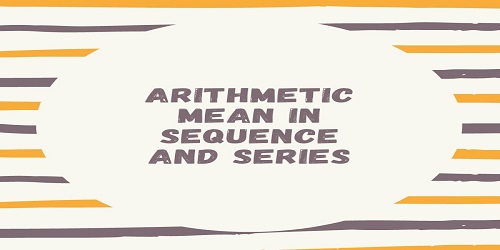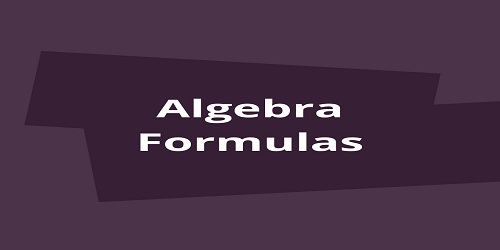Cartesian Product of Sets:
If A and B be the two non-empty sets, then the Cartesian product of set A with set B is denoted by A x B and is defined as the set of ordered pairs (x, y) such that x ∈ A and y ∈ B i.e.
| A x B = {(x, y) : x ∈ A and y ∈ B} |
Properties of Cartesian Product of Sets:
- n (A x B) = n (A) . n (B)
- A x B is an empty set if either A or B is empty.
- A x B ≠ B x A (i.e. the cartesian product is not commutative).
- A x B = B x A if A = B.
| (1) If A = {1, 2} and B = {a, b, c}. Find A x B? Solution: A = {1, 2} B = {a, b, c} Now, A x B = {(1, a) (1, b) (1, c) (2, a) (2, b ) (2, c)} |
| (2) If A = {1, 4}, B = {2, 3}, C = {-1, 2}. Verify that A x (B ∪ C) = (A x B) ∪ (A x C). Solution: B ∪ C = {2, 3} ∪ {-1, 2} = {-1, 2, 3} Also, A x (B ∪ C) = {(1, -1) (1, 2) (1, 3) (4, -1) (4, 2) (4, 3)} ……….(i) Now A x B = {(1, 2) (1, 3) (4, 2) (4, 3)} and A x C = {(1, -1) (1, 2) (4, -1) (4, 2)} (A x B) ∪ (A x C) = {(1, 2) (1, 3) (4, 2) (4, 3) (1, -1) (4, -1)} ……….(ii) From (i) and (ii)- A x (B ∪ C) = (A x B) ∪ (A x C) |
| (3) If (P, 5) and (2q, 1) belong to the set {(x, y) : x + y = 3}. Find P and q? Solution: {(x, y) : x + y = 3} and (P, 5) (2q, 1) ∈ set. ∴ P + 5 = 3 and 2q + 1 = 3 ⇒ P = -2 and q = 1 |
| (4) If x ∈ A = {2, 4, 6} and y ∈ B = {3, 4, 5, 7, 8}. Find the set R of all ordered pair (x, y) such that x < y and x is a factor of y? Solution: R1 = {(x, y) : x < y} ={(2, 3) (2, 4) (2, 5) (2, 7) (2, 8) (4, 5) (4, 7) (4, 8) (6, 7) (6, 8)} R2 = {(x, y) : x is a factor of y} = {(2, 4) (2, 8) (4, 4) (4, 8)} Now R = R1 ∩ R2 = {(2,4) (2, 8) (4, 8)} |
| (5) For any three sets A, B and C. Prove that- (i) A x (B ∪ C) = (A x B) ∪ (A x C). Solution: Let (x, y) ∈ A x (B ∪ C) ⇒ x ∈ A and y ∈ (B ∪ C) ⇒ x ∈ A and {y ∈ B or y ∈ C} ⇒ {x ∈ A and y ∈ B} or {x ∈ A and y ∈ C} ⇒ (x, y) ∈ (A x B) or (x, y) ∈ (A x C) ⇒ (x, y) ∈ (A x B) ∪ (A x C) ∴ A x (B ∪ C) ⊆ (A x B) ∪ (A x C) ……….(i) Similarly, (A x B) ∪ (A x C) ⊆ A x (B ∪ C) ……….(ii) From (i) and (ii)- A x (B ∪ C) = (A x B) ∪ (A x C) (ii) A x (B ∩ C) = (A x B) ∩ (A x C). Solution: Let (x, y) ∈ A x (B ∩ C) ⇒ x ∈ A or y ∈ (B ∩ C) ⇒ x ∈ A or {y ∈ B and y ∈ C} ⇒ {x ∈ A or y ∈ B} and {x ∈ A or y ∈ C} ⇒ (x, y) ∈ (A x B) and (x, y) ∈ (A x C) ⇒ (x, y) ∈ (A x B) ∩ (A x C) ∴ A x (B ∩ C) ⊆ (A x B) ∩ (A x C) ……….(i) Similarly, (A x B) ∩ (A x C) ⊆ A x (B ∩ C) ……….(ii) From (i) and (ii)- A x (B ∩ C) = (A x B) ∩ (A x C) (iii) A x (B – C) = (A x B) – (A x C). Solution: Let (x, y) ∈ A x (B – C) ⇒ x ∈ A and y ∈ (B – C) ⇒ x ∈ A and {y ∈ B and y ∉ C} ⇒ {x ∈ A and y ∈ B} and {x ∈ A and y ∉ C} ⇒ (x, y) ∈ (A x B) and (x, y) ∉ (A x C) ⇒ (x, y) ∈ (A x B) – (A x C) ∴ A x (B – C) ⊆ (A x B) – (A x C) ……….(i) Similarly, (A x B) – (A x C) ⊆ A x (B – C) ……….(ii) From (i) and (ii)- A x (B – C) = (A x B) – (A x C) |
| (6) If A and B are any two non-empty sets then A x B = B x A ⇔ A = B? Solution: Suppose A x B = B x A, then we have to prove that A = B. Let x ∈ A ⇒ (x, a) ∈ A x B ⇒ (x, a) ∈ B x A [∵ A x B = B x A] ⇒ x ∈ B ∴ A ⊆ B Similarly, B ⊆ A ∴ A = B Conversely, suppose A = B, then we have to prove that A x B = B x A Now, A x B = A x A [∵ B = A] ……….(i) Also, B x A = A x A [∵ B = A] ……….(ii) From (i) and (ii)- A x B = B x A |
| (7) If A subset B and C subset D then prove that A x C is a subset of B x D or A x C ⊆ B x D? Solution: Let (x, y) ∈ A x C ⇒ x ∈ A and y ∈ C ⇒ x ∈ B and y ∈ D [∵ A ⊆ B and C ⊆ D] ⇒ (x, y) ∈ (B x D) ∴ A x C ⊆ B x D |
| (8) For any three sets A, B and C. Prove that A x (B’ ∪ C’)’ = (A x B) ∩ (A x C). Solution: A x (B’ ∪ C’)’ = A x [(B’)’ ∩ (C’)’] [Using De Morgan’s Law] = A x (B ∩ C) = (A x B) ∩ (A x C) |









Comments (No)